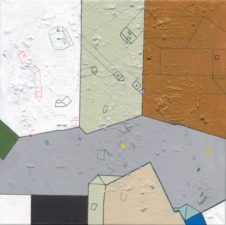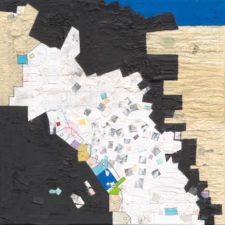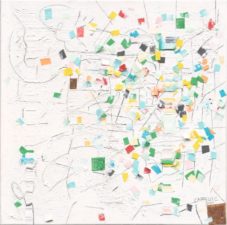The NFT art market has radically changed inside the Internet. With the inception of NFTs and, more generally, blockchain technology, people are now paying money for digital goods. Before this, the only instance where people used their money online to get a digital product was access to content. Think of Netflix, whose business model is a subscription in which you pay a fee, and in return, you can watch movies and series. However, you don’t own an asset through your Netflix, Amazon Prime Video, or Disney+ subscription. NFTs are a radical concept that has become more widespread as people realize they can use NFTs to own a small part of the Internet. Also, they have some practical applications that enhance Internet use and experience.
The NFT art market brings things that were unthinkable on the Internet just a few years ago. Scarcity, for example, is possible thanks to NFTs. This is because they are verified on the digital ledger known as the blockchain, which effectively allows artists and owners to be universally recognized as the sole creators and owners of a given NFT. This has also provided a lot of power to digital artists, who now see that they have a powerful tool to protect their creations and monetize them. The NFT art market has its own economics that those involved need to understand to thrive. Let’s go over some of what the economics are comprised of.
The NFT art market is usually in crypto
Transactions for NFTs are usually settled in cryptocurrencies such as ETH for those that operate in Ethereum or SOL if you do so in Solana. Some NFT collectible projects come with a solution that allows you to buy into it with fiat currencies. Still, the NFT art market settles mostly in crypto payments. And that in and of itself provides a different set of economic rules than the traditional art sector.
The reason is that many of the different blockchains’ native cryptocurrencies have a deflationary coin issuing mechanism. So, you have that BTC and ETH are worth several thousand USD. There was a time that had very high transaction fees in the Ethereum blockchain. Due to the value of ETH, people were paying 200$ in these fees.
Part of what is so attractive about the NFT art market for investors is that a rise in the valuation of the underlying cryptocurrency can mean that the NFT artwork will be a lot more valuable than what the collector paid for.
NFTs are an asset, the first digital scarce asset
One of the most revolutionary aspects of NFTs is that they have brought scarcity in the digital space. Before, everything was easily reproducible and shareable. With NFTs, you can point to a piece of content you can pay for, own, and basically say that no one else owns. Unless it becomes a commodity, which would make it a different class of NFT, scarcity is now a part of digital life. Thanks to the NFT art market, a crucial concept of economic science has been introduced to the digital world.
When you combine this scarcity aspect with the fact that NFTs are non-fungible (you can’t expect to trade one for another and get the exact same value), the result is that NFTs can become the vehicle with which you can do almost anything in Web3. Are you a voiceover artist and want to protect your talents? Perhaps you might want to do so with blockchain technology and NFTs so you monetize it. The same applies to music, visual arts, films, or digital architecture for metaverse real estate. The NFT art market is just getting started.
A very different game for artists. For better
Artists should note the economics of the NFT art market and the benefits they can reap from it. One of the good things inside the sector is that a smart contract can be programmed so that artists get royalties from secondary sales as their artwork gets exchanged.
This, of course, is not something that will make that much of a difference. Art is not a financial commodity to be traded constantly every day. So, this sort of royalty does not represent a significant, reliable revenue stream. But it speaks about how the NFT art market can be a gentler, fairer space for artists. And if a collector can sell one of your art pieces for a lot of money, you could be in for a surprise.
Crowdfunding or support for artists
One of the best things about the NFT art market is that supporters of an artist can show their support in very concrete ways and get something in return. That is, they buy an art piece to fund the artist’s work, and in return, they get a piece of art that might rise in valuation. But at the very least, they can say now that they own artwork from an artist they like. Sometimes, just appreciating the art is all you need.
In contrast, Web 2.0 is all about access to content. You support a content creator, and what you get in return is the ability to perhaps see the totality of the content, get the content first, or ask questions to the creator. But you don’t get something you own, and you can later show other people as evidence of your support.
NFTs and traditional art
The NFT art market can complement traditional art, enhance it, and even help preserve it. For example, the SOPRG NFT art gallery offers art made the old-fashioned way. That is artistic creations that are hand-crafted through traditional techniques. It later transforms the art into NFTs through top-tier scanning technology. So, people can buy art in NFT format and physically.
This allows museums to fund efforts to restore art, for example. Or, it can complement a physical painting, where the NFT version has a smart-contract feature.
The NFT art market has its own economics, as can be clearly seen. One has to understand, especially the underlying cryptocurrencies which can be volatile. What is most important about the space is that you enjoy viewing art, creating it, or supporting your favorite artists.
Painting by Mrs. Cappelli – you can buy the NFTs via our shop.





